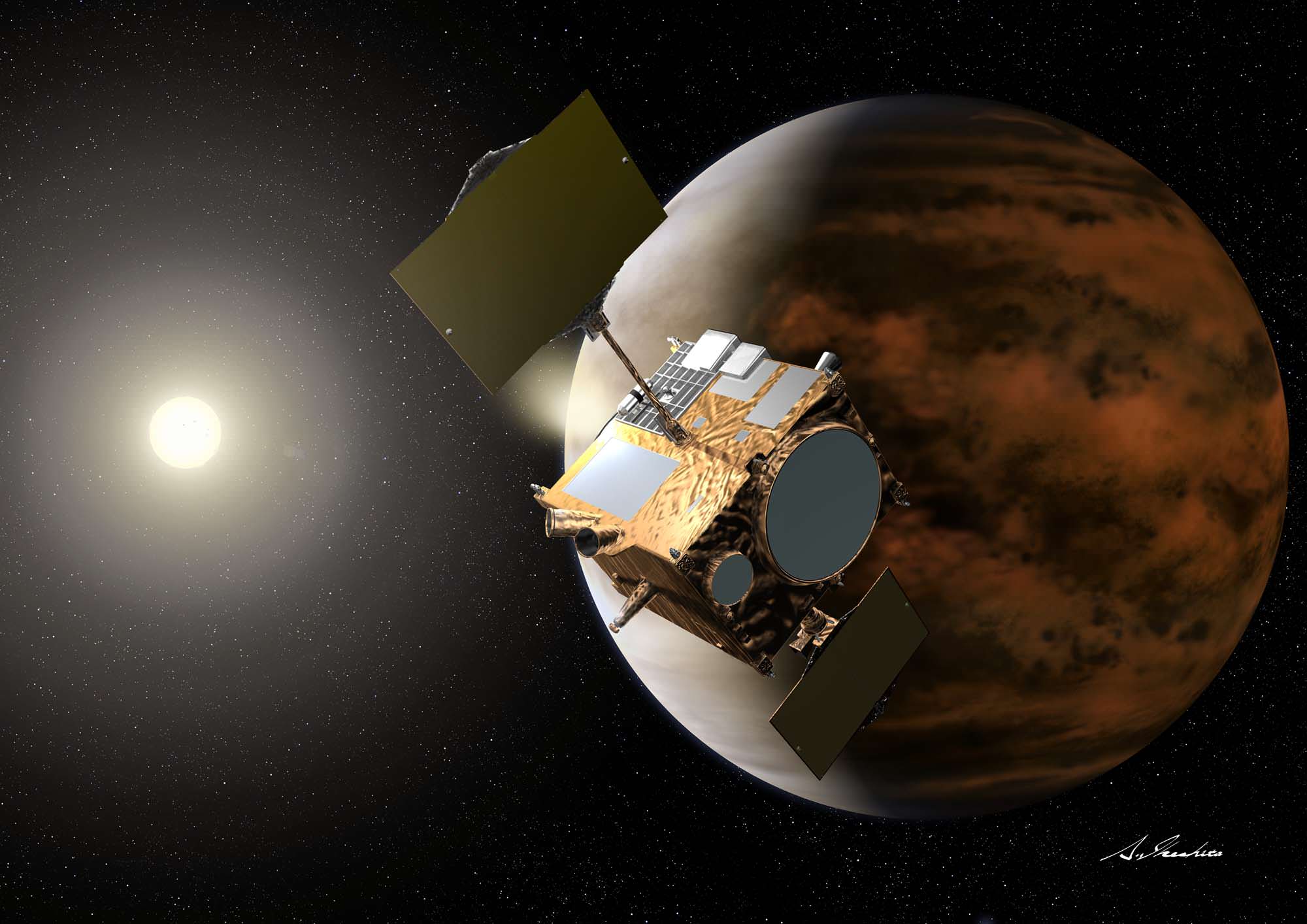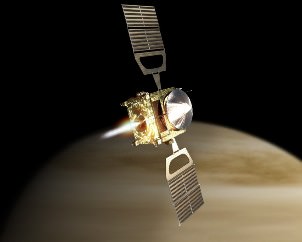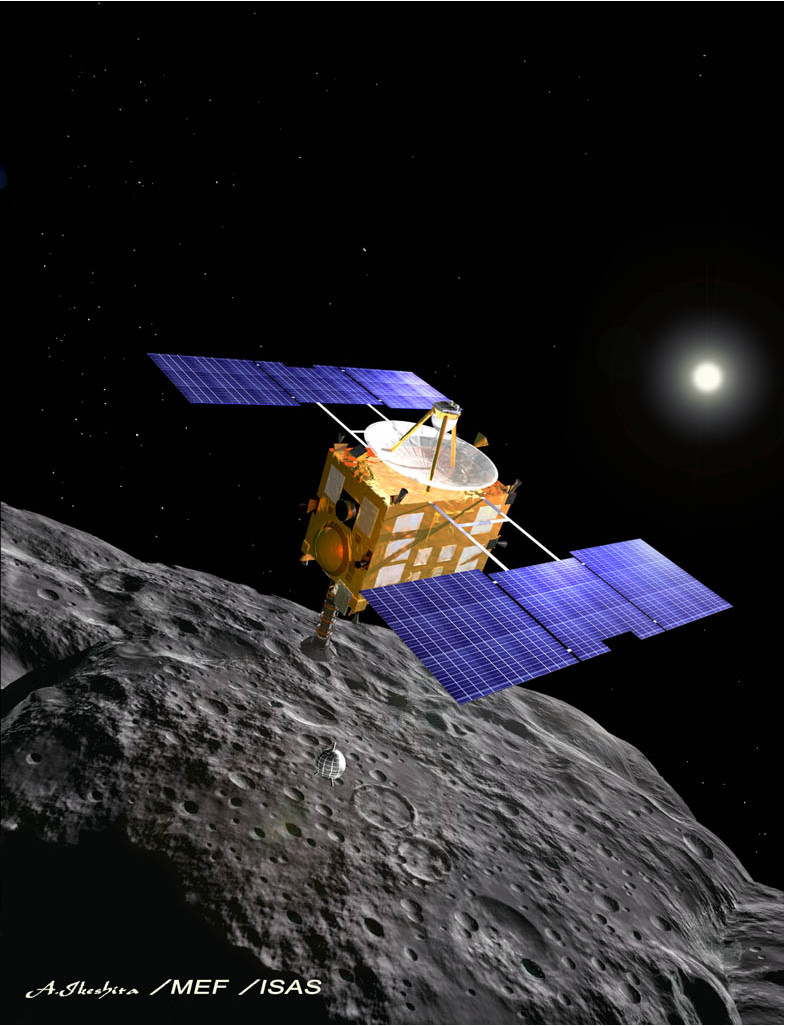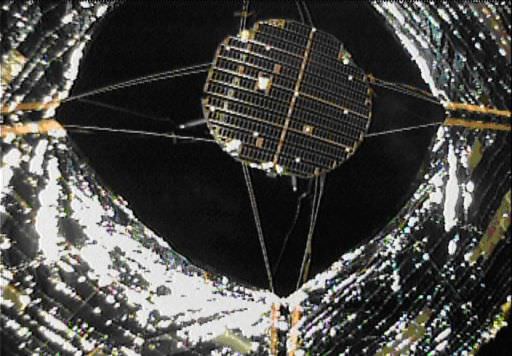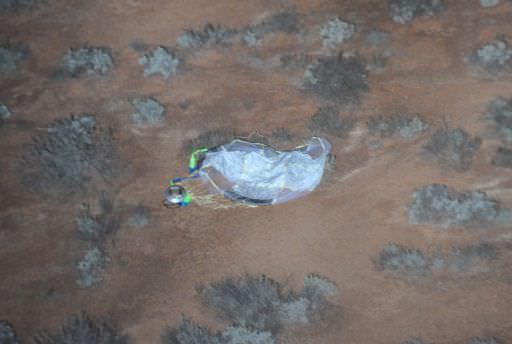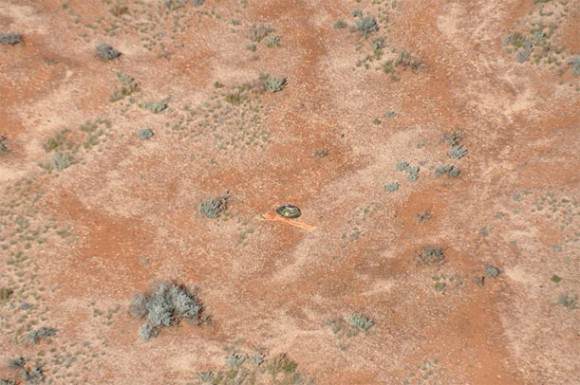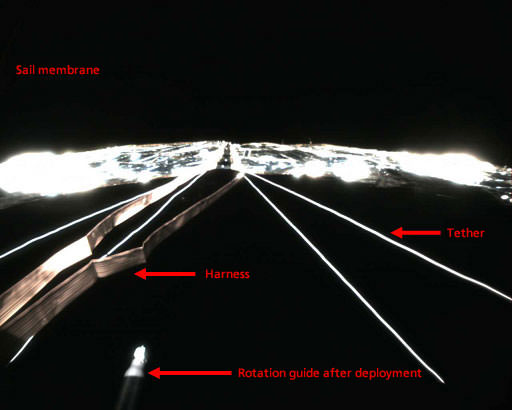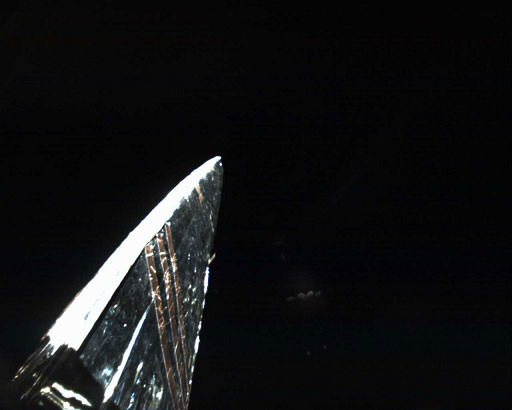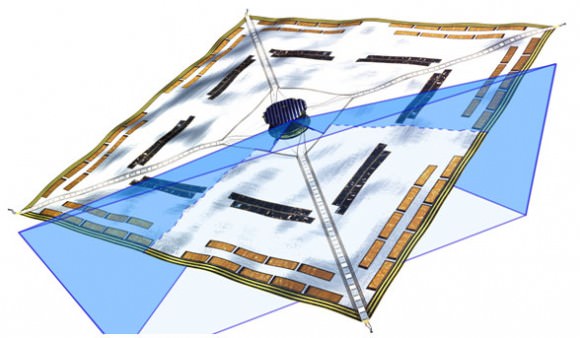The Japan Aerospace Exploration Agency (JAXA) is now considering making a second attempt to insert the Akatsuki probe into Venus’ orbit one year earlier than originally planned, in five years instead of six. After a malfunctioning valve in the spacecraft’s fuel pressure system caused the engine to function abnormally, Akatsuki failed to enter Venus’ orbit on Dec. 7, 2010 as planned. JAXA had said the spacecraft’s orbit around the Sun would put it in position for another orbit insertion attempt in about six years. But because the spacecraft’s speed has slowed more than expected, the agency now says it may be possible to slowly decelerate Akatsuki even more and let Venus “catch up with it,” according to a report in the Mainichi Daily News. Therefore, an attempt to enter orbit may be made sometime in 2015. A quicker return to Venus is also advantageous in terms of the lifespan of the probe and its equipment.
“At the speed the probe was moving under our first retry plan, it would probably have been impossible to make the orbital insertion,” said a JAXA official, quoted in the Japanese online news site. “We hope to explore every possibility, and make an exploration of Venus a reality.”
After the original mission failure, JAXA had calculated that Akatsuki would make 11 trips around the Sun for every 10 Venus made, putting the next closest encounter between the spacecraft and planet sometime in December 2016 or January 2017. But subsequent examination of data showed Ataksuki’s engine power had dropped by almost 60 percent, slowing the spacecraft and making it possible to make a second attempt at entering orbit a year earlier. The bad news is that the slowdown is possibly caused by a malfunction in the fuel supply system or damage to the engine nozzle. If that is the case, the prospects for restoring full function are very low.
Additionally, if the engine nozzle has been weakened, it will be difficult to decelerate the Akatsuki enough for orbital insertion when it again closes with Venus. But after consultations with engineers, JAXA is now considering trying to decelerate the craft a little bit at a time, allowing it to make eight orbits around the sun before Venus catches up with it in five years.
Source: The Daily Mainichi News

